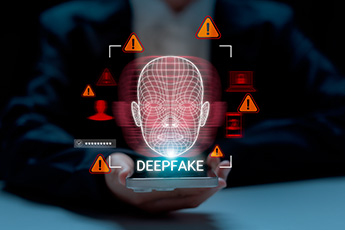Did you know that 40%-50% of human DNA is identical to that of cabbages? Reassuringly, we have much more in common with one another than we do with cabbages — in fact, we share an incredible 99.9% of our DNA with each other. Our individuality comes down to just 0.1% of our genome. This might sound small, but that 0.1% represents 3MM base pairs — more than enough opportunities for each of us to be unique.What’s more, that 0.1% of our DNA plays an incredibly important role in the fight against cybercrime in financial services through the growing use of biometrics.Biometrics in Brief
The financial impact of global cybercrime is predicted to reach $8T in 2023 — valuable enough to be the world’s third-largest economy behind China and the US. In fact, it’s estimated to reach $10.5T annually by 2025, while the spend on cybersecurity protective measures will only reach $1.75T cumulatively from 2021 to 2025. In light of this aggressive growth in cybercrime, it’s clear that traditional security measures such as passwords, PINs, and tokens no longer offer sufficient protection. This means that community financial institutions (CFIs) need to use everything at their disposal to combat increasingly sophisticated cyberattacks. Biometrics is a potentially invaluable tool in their arsenal.Biometric technology, such as fingerprint ID, retinal scanning, and facial recognition, uses unique human behavioral or physical characteristics and markers to verify identities and authenticate transactions. More advanced biometric solutions include passive voice recognition, or AI-based conversational biometrics that recognize an individual’s use of words, language, and grammar.Primary AdvantagesBiometric technology, which many CFIs are already using, offers the institution and its customers the following benefits:
The financial impact of global cybercrime is predicted to reach $8T in 2023 — valuable enough to be the world’s third-largest economy behind China and the US. In fact, it’s estimated to reach $10.5T annually by 2025, while the spend on cybersecurity protective measures will only reach $1.75T cumulatively from 2021 to 2025. In light of this aggressive growth in cybercrime, it’s clear that traditional security measures such as passwords, PINs, and tokens no longer offer sufficient protection. This means that community financial institutions (CFIs) need to use everything at their disposal to combat increasingly sophisticated cyberattacks. Biometrics is a potentially invaluable tool in their arsenal.Biometric technology, such as fingerprint ID, retinal scanning, and facial recognition, uses unique human behavioral or physical characteristics and markers to verify identities and authenticate transactions. More advanced biometric solutions include passive voice recognition, or AI-based conversational biometrics that recognize an individual’s use of words, language, and grammar.Primary AdvantagesBiometric technology, which many CFIs are already using, offers the institution and its customers the following benefits:
- Improved security. It is much more difficult to forge or steal biometric data as it relies on an individual’s unique qualities and characteristics, and provides a clear audit trail of every transaction.
- Fast and frictionless user experience. Biometrics reduce the need for customers to answer numerous security questions and remember different passwords.
- Convenience. Customers can complete transactions from any device, at any time, and in any location.
Biometrics can help boost the security of online, ATM, and in-person transactions. Key use cases include customers signing into their online accounts, completing online transactions, applying for new loans, and opening new accounts.Indeed, 50% of respondents in a survey by PYMNTS said they’d welcome their FI implementing additional security measures to protect their assets and personal information, while other research has shown that 80% of customers find the use of biometrics both secure and convenient.Key Challenges
As with all evolving technology, using biometrics is not without its challenges. These include the following:
As with all evolving technology, using biometrics is not without its challenges. These include the following:
- Accessibility concerns for customers with disabilities
- Users not having access to the right equipment or necessary computing power requirements
- Incompatibility of biometric technology with legacy systems
- Interference of environmental factors, such as poor lighting and background noise
There are also diversity concerns — some ethnicities are not represented well by the technology and data sets. Also, legal restrictions in certain states may limit the application of certain biometric technologies.Some of these issues can be overcome using verification backup options: biometrics should form part of a CFI’s holistic security solution, instead of being the only solution. However, other challenges, including the potential theft of biometric data and the rise of deepfakes, are harder to manage.The Case for Multimodal BiometricsFortunately, multimodal biometrics can help CFIs tackle some of these more complex challenges and maximize their security.Multimodal biometrics involves using different biometric technologies concurrently — for example, voice biometrics alongside fingerprint ID, facial recognition, or retinal scanning — and layering these with other factors such as behavioral analytics. This should provide a highly secure authentication process that is incredibly difficult to hack or steal.The use of artificial intelligence is instrumental in this process, allowing for real-time risk monitoring and detection.Combining different types of biometric authentication, including passive biometrics and behavioral analytics, helps to increase the efficiency and security of financial transactions. Multimodal biometrics has the potential to provide huge cost savings for financial institutions by reducing fraud along with the need for manual verification.The current economic climate offers cybercriminals and fraudsters numerous opportunities to take advantage of consumers, especially those facing financial difficulties. Effective biometrics, particularly multimodal biometrics, can not only help CFIs to future-proof their security protocols and protect their customers, but also provide a frictionless user experience.




